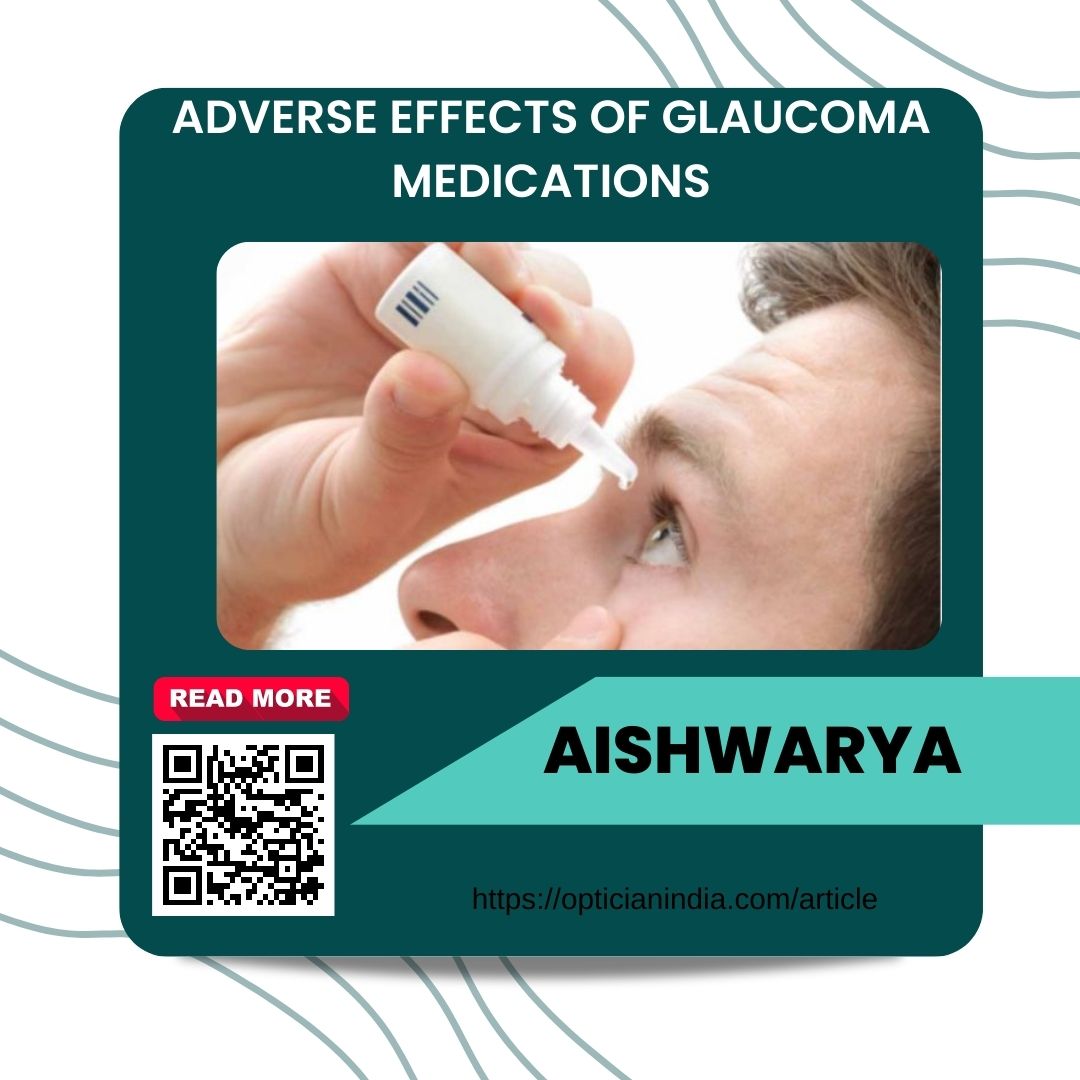ADVERSE EFFECTS OF GLAUCOMA MEDICATIONS

Glaucoma eye drops have hypotensive goods and likewise all other drug are associated with adverse response, as it contains combination with preservatives.
The β-blocker eye drops nearly contain both α1-blockers and β-blockers, which help in reducing IOP through different mechanisms. The β-blockers control waterless humor and α1-blockers as it accelerate uveoscleral exodus channel. The β-blockers drug are presently available are timolol, betaxolol, metipranolol and carteolol. Optical adverse responses β- blockers drugs include conjunctival disinclinations, blepharitis, and optical pemphigoid.
The simultaneous reduction in reflective tearing may lead to corneal epithelium disorders. Carteolol has intrinsic sympathomimetic activity so administration of drug does not lead to a reduced corneal sensitivity. Therefore, carteolol drug administration was associated with fewer cases of corneal epithelium disorders than timolol. [1]
Systemic side goods a major cause of β-blockers is that they constantly leads to systemic side goods. These medicines target β1- and β2-receptors so both cardiac contractility and rate of twinkle may be reduced. Adverse responses of the circulatory system are caused by β1-blockers and included blood pressure decreases, and an irregular palpitation and on respiratory system are caused by β2-blockers and include worsening of asthma attacks and habitual obstructive pulmonary complaint.
Prostaglandin analogs are presently available as latanoprost, travoprost. They're frequently the first line medicine remedy used because they've been extensively successful in dwindling IOP, infrequently beget systemic side goods, and only need to be administered once a day.
Optical adverse responses conjunctival mislike, conjunctival hyperemia, corneal epithelial diseases, and blepharitis are characteristic adverse responses associated with prostaglandin analogs.
Carbonic anhydrase impediments reduce IOP by inhibiting the ciliary epithelium and controlling waterless exodus conformation. Acetazolamide, an internal carbonic anhydrase asset, but is associated with a high prevalence and frequence of adverse responses, including dysesthesia of the fritters and around the lips, frequent urination, anorexia and, reduction in weight. Optical adverse responses associated with carbonic anhydrase impediments include conjunctival mislike, conjunctival hyperemia, corneal epithelial diseases, blepharitis, Steven-Johnson pattern and poisonous epidermal necrosis.[2]
Dorzolamide is thick and has a fairly acidic up to of pH (pH=5.5 –5.9), which generally causes optical vexation. Because intraocular transitivity is slightly poor, foreign body sensation and blurred vision frequently do in cases entering brinzolamide.
Parasympathomimetic medicine stimulated, the ciliary muscles constrict. The scleral spurs are latterly pulled backwards to open up the trabecular network, the resistance to waterless exodus is reduced, and IOP was dropped. In eyes with unrestricted-angle glaucoma, these medicines caused condensation of the sphincter pupillae, iris levelling and iris concurrence from the trabecular network. One presently available is pilocarpine. Optical adverse responses associated with parasympathomimetic medicines caused visual field condensation, and night vision loss, optical pemphigoid, cataract, and retinal detachment may also do. [3]
Sympathomimetic medicines sympathetic whim-whams α-receptors reduced IOP by stimulating α-receptors a many twinkles after input. This leads to ciliary blood vessel compression and waterless humor product latterly accelerated because of goods on trabecular glycosaminogly can metabolism.
Optical adverse responses to sympathomimetic medicines included voguishness, vexation, conjunctival injection and pupil dilation. Systemic adverse responses might affect the cardiac system and adverse responses included increases in systemic blood pressure, tachycardia and irregular palpitation. [4]
References
1 Inoue K , Okugawa K, Kato S, et.al Ocular factor relevant to anti-glaucomatous eyedrop-related kerateitheliopathy. J glaucoma. 2003;12(6):480-485.[PubMed] [Google Scholar]
2. Strahlman E, Tipping R, Voqel R. International Dorzolamide Study Group: A double-masked, randomized 1-year study comparing dorzolamide (Trusport), timolol, and betaxolol. Arch Ophthalmol. 1995;113(8):1009–1016. [PubMed] [Google Scholar]
3. Zimmerman TJ, Wheeler TM. Miotics: side effects and ways to avoid them. Ophthalmology. 1982;89(1):76–80. [PubMed] [Google Scholar]
4. Anderson JA. Systemic absorption of topical ocularly applied epinephrine and dipivefrin. Arch Ophthalmol. 1980;98(2):350–353. [PubMed] [Google Scholar]

.jpg)

.jpg)
.jpg)
.jpg)


1.jpg)



.jpg)
.jpg)



_(Instagram_Post).jpg)
.jpg)
_(1080_x_1080_px).jpg)


with_UP_Cabinet_Minister_Sh_Nand_Gopal_Gupta_at_OpticsFair_demonstrating_Refraction.jpg)
with_UP_Cabinet_Minister_Sh_Nand_Gopal_Gupta_at_OpticsFair_demonstrating_Refraction_(1).jpg)

.jpg)








.jpg)



.png)




